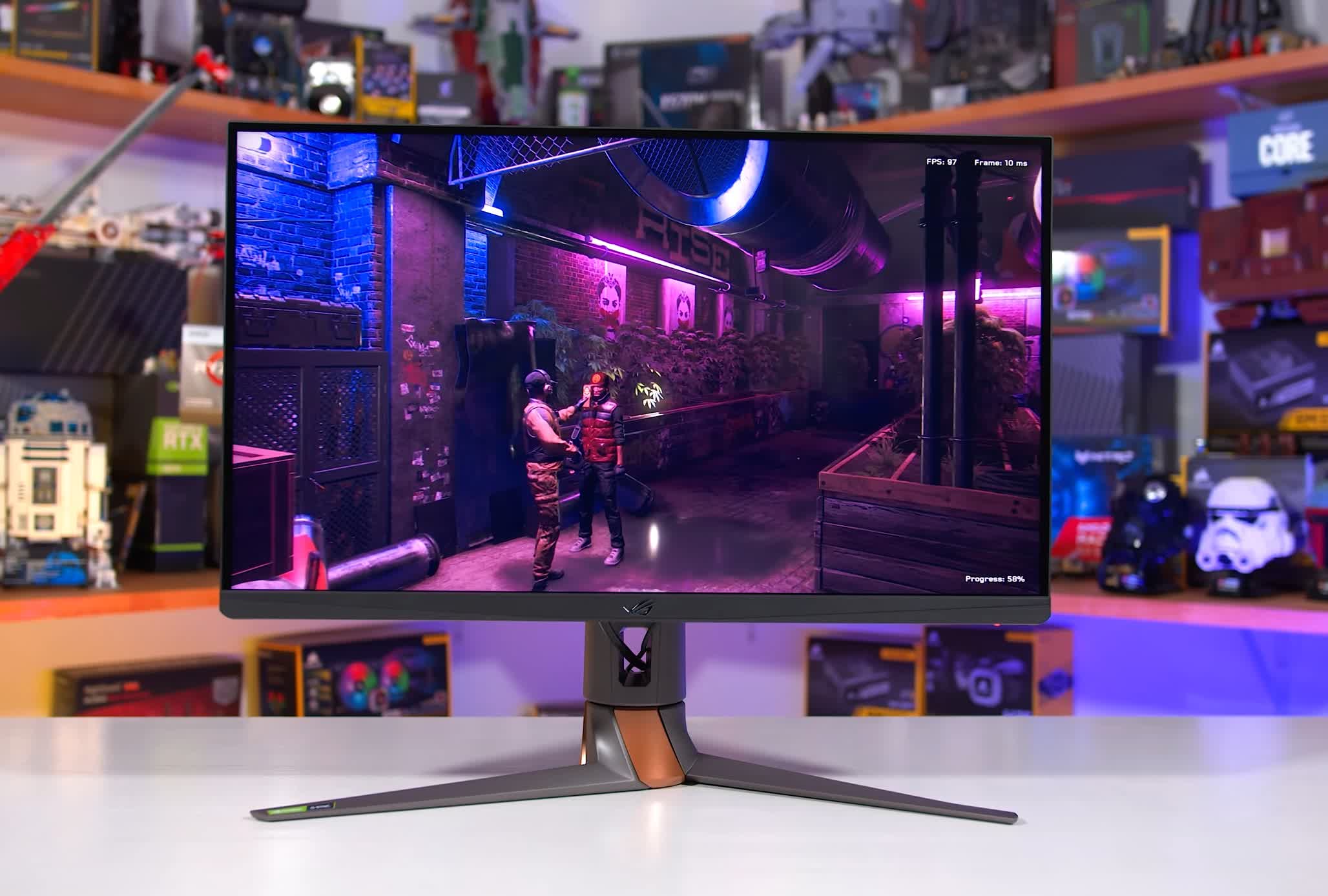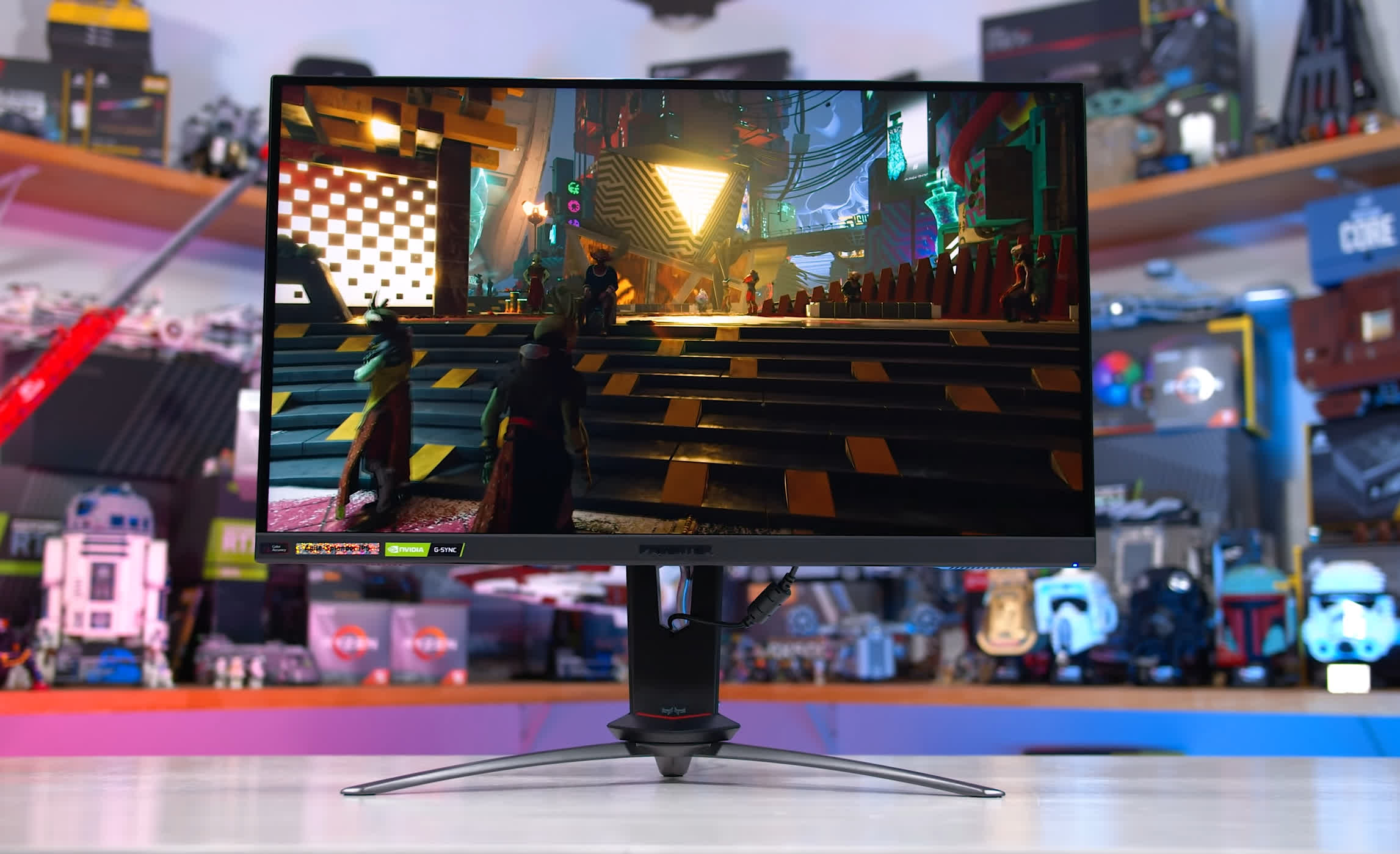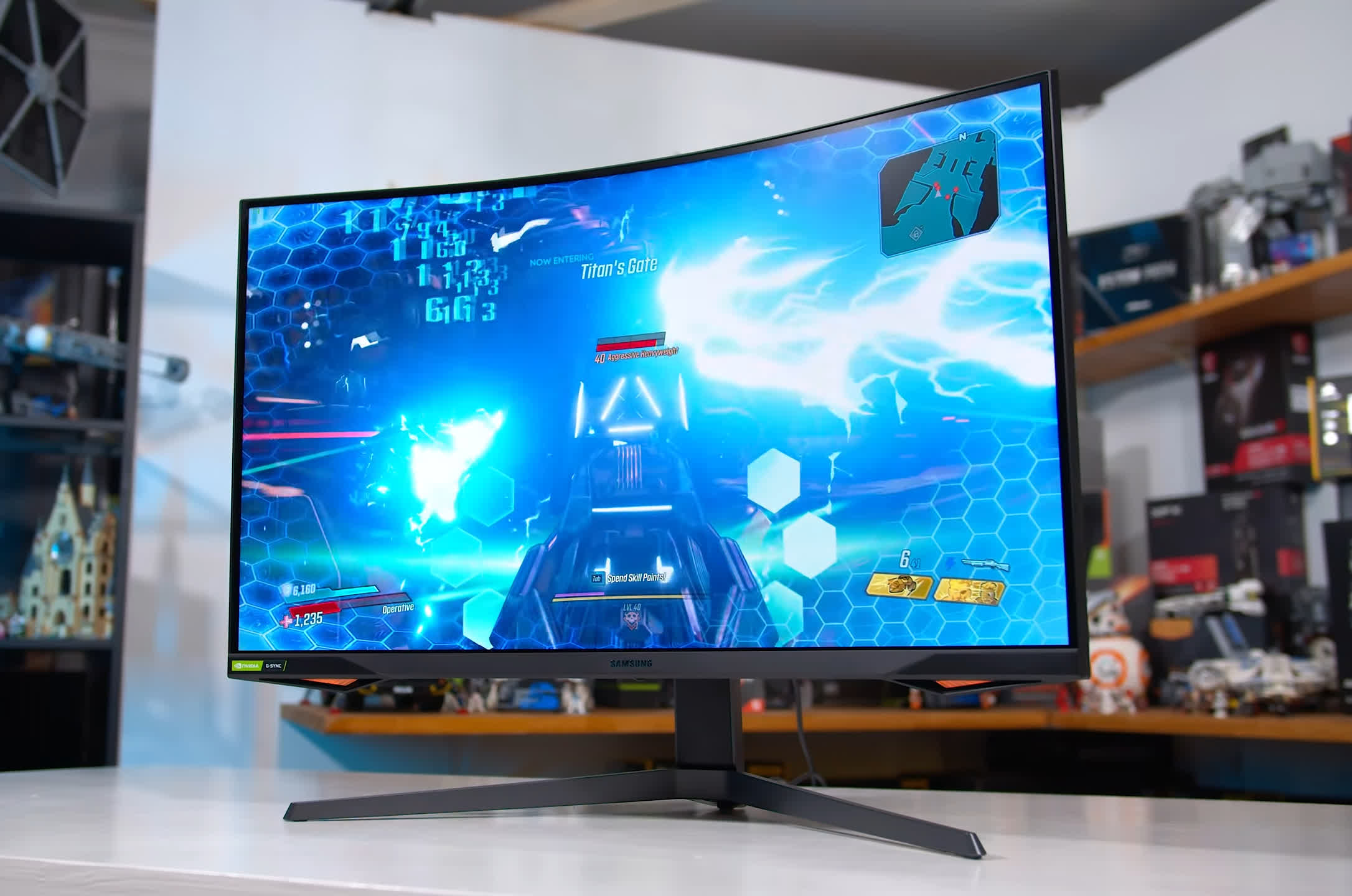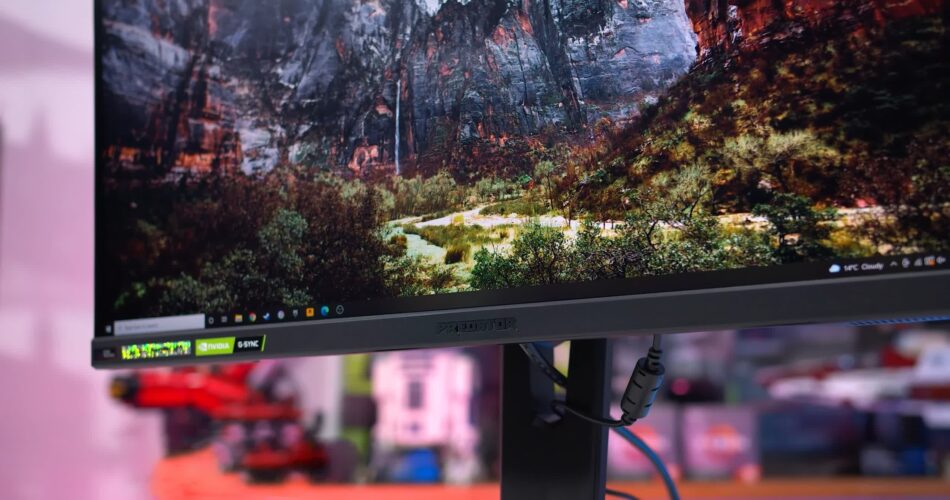If you want a truly high-end 1440p gaming monitor in 2022, the place to be is in the 240Hz range, where high refresh rate gaming is very attainable. Having a 240Hz refresh gives you the flexibility to play competitive games like Fortnite, Overwatch, and CS:GO with very low latencies and smooth gameplay, while also enjoying single-player titles at a decent resolution and ultra quality settings, but at a lower refresh rate. If you choose the right product, you’ll end up with something very future proof as GPU power continues to rise.
There are a few ways to go in this market segment, so we’ll start with the outright best monitor you can get.
The Asus ROG Swift PG279QM is a 27-inch 1440p 240Hz IPS monitor that ticks almost every box you could want, and nails performance in all areas. It’s very fast. On average across the refresh range it’s the fastest 1440p IPS monitor we’ve tested based on cumulative deviation, which measures the balance between response times and overshoot.

The PG279QM is so well balanced that it has minimal overshoot artifacts at all refresh rates, and benefits from variable overdrive to keep performance the best it can be at all times. It truly has a single overdrive mode experience, and I was very impressed with its motion performance overall.
The Asus is also versatile as the PG279QM has outstanding color performance. This is a very wide gamut monitor with great coverage of DCI-P3 and Adobe RGB, plus it has elite factory calibration including one of the best sRGB modes we’ve tested. If you just want a monitor that looks excellent and performs to the top of its ability straight out of the box, the PG279QM is the way to go.
From a hardware perspective, there’s nothing better that we’ve tested, but the luxury does come at a price: at $900, this is an expensive 1440p monitor in 2022, as we’ve seen 240Hz pricing steadily fall over the last year or so. But if you really want the best, you’ll have to pay for it.
More 240Hz options that are more affordable
If you’re looking for something a bit more bang for buck, while still delivering excellent performance, there’s a few ways to go. For an IPS monitor that’s most similar to the PG279QM, we recommend to check out the Acer Predator XB273U GX. It’s $250 cheaper than the Asus model for essentially the same sort of panel. It lacks some of the features and performance of the Asus — for example, it doesn’t have variable overdrive — so response performance isn’t as good, and factory calibration isn’t as tight or impressive.
But if you’re not after the absolute best in all areas, then the Acer delivers better bang for buck and is what many buyers should consider as the next best option. I would also choose the Acer Predator over most other IPS alternatives like the Alienware AW2721D and Gigabyte Aorus FI27Q-X which are either more expensive, worse performing, or both.

Another strong option to consider is the Samsung Odyssey G7. Pricing has come down recently and we’ve seen it selling for as little as $550. The 27-inch 1440p 240Hz VA model is an excellent deal at that price.
The main reason to get an Odyssey G7 is that you want speed. This monitor has excellent motion performance, it’s faster and slightly clearer than its IPS competitors with no typical VA issues like dark level smearing. It also has a much higher contrast ratio with deeper blacks, a key selling point and crucial if you plan on playing games in a dark room.

However, to hit these high levels of performance, there are trade-offs in other areas. The general color experience isn’t as good or versatile as you’ll get from an IPS monitor. The color gamut isn’t as wide, viewing angles are worse, and the aggressive 1000R curvature isn’t ideal for content creation.
Samsung has also had quality control issues surrounding these monitors, which should be factored in. But it’s still a solid monitor for pure gamers out there.
Source link


